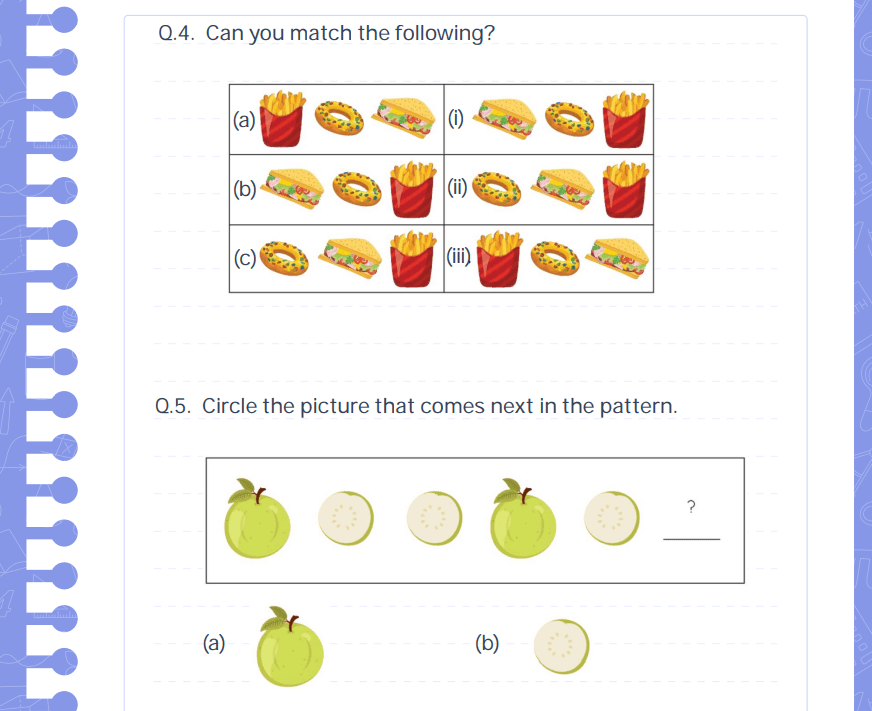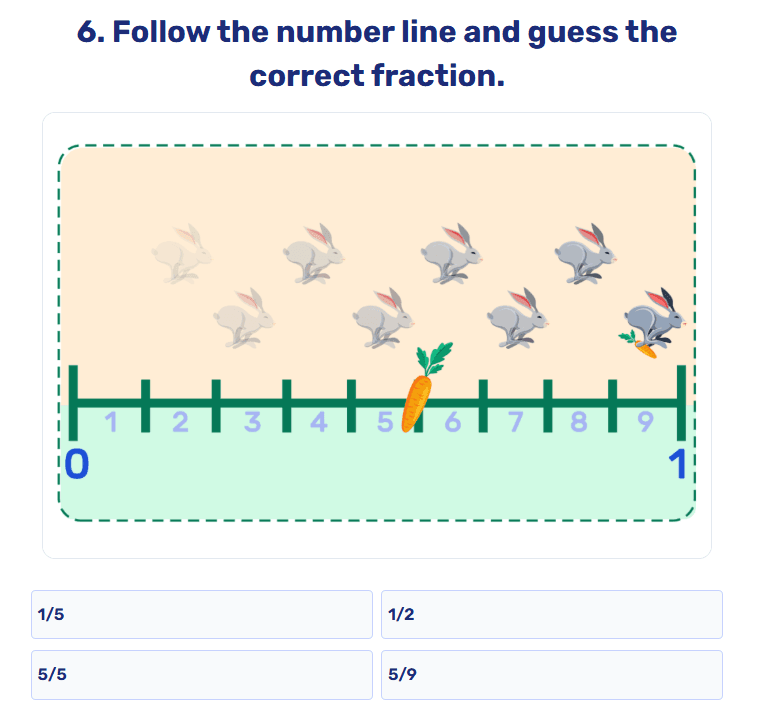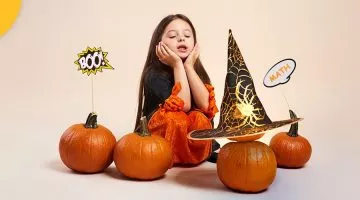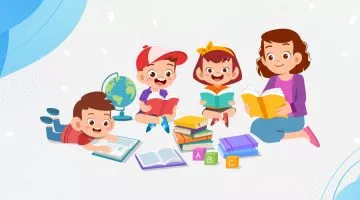55 Easy Math Riddles for Kids to Make Math Learning Fun
reviewed by Mary Grace Carlos
Updated on August 7, 2025
Let’s be sincere: most kids find math boring. However, math riddles for kids can make things seem much more fun. I have worked as a math tutor for years, and what I’ve spotted is the undeniable power of these non-standard, creative, and tricky tasks.
But what I also know for sure is that riddles alone are not enough to learn math. Before we proceed, it’s important to mention that personalized tutoring is one of the best ways to help your child understand math more quickly. Visit Brighterly tutoring page to get started. Or continue reading to pick yourself the best math riddles for your home lessons.
Key points:
- Fun math riddles help kids get focused in an unobtrusive and engaging way.
- You can use the puzzles from this guide for your home practice, or check Brighterly’s math riddles worksheets for many extra tasks.
- Better logical thinking, boosted creativity, enhanced collaboration skills, and growing self-esteem are only a few benefits achieved through regular practice with riddles, especially when working with math riddles hard enough to challenge young minds.
55 kid’s math riddles with answers
- Easy math riddles for kids: Wordplay
- Math riddles for kids for logical thinking
- Tricky math riddles for kids on problem-solving
- Math riddles with answers for kids: Percentage and ratio calculations
- Hard math riddles for kids: Geometry and logic
- A few riddles for fraction calculations
- Math riddles for elementary students: Math vocabulary/concepts
- Math riddles for teens: Algebra and logic
- Math riddles for sequence and pattern recognition
- Easy math riddles with answers: Creative problem-solving
- Math riddles with answers for kids: Observational logic
- A few riddles on multiplication and logic
- Simple math riddles your kids: Arithmetic and logic
Easy math riddles for kids: Wordplay
Category: Grade 3.
Grade |
Math riddles |
Answer |
| 3 | Two math books complain to each other. What do they tell each other? | I have so many problems. |
| 3 | A triangle is very rude. What does it say to a circle? | You’re pointless. |
| 3 | I’m an odd digit. But if you take away a letter from my name, I will become even. What number am I? | Seven |
| 3 | What does a plant grow in a math class? | It grows square roots — ba dum tss! |
| 3 | Why did the student eat his math homework? | Because the teacher told him it was a piece of cake! |
Note: Math riddles for 3rd graders often utilize double meanings of specific words. Thus, they can improve the language skills of your child and expand their vocabulary.
Math riddles for kids for logical thinking
Category: Grades 2-6.
Grade |
Math riddles |
Answer |
| 4 | Isabella has a huge family: 20 cousins, ten aunts, and ten uncles. Each cousin has an aunt who’s not Isabella’s. How is that possible? | This aunt is Isabella’s mom. |
| 2 | A family has five sons, and each of them has a sister. How many kids does a family have in total? | The family has six kids – the five sons have one common sister. |
| 4 | I say that 6 + 7 = 1. How can that be possible? | I talk about time because 6 AM + 7 hours is 1 PM. |
| 6 | When David was eight, his little brother Alex was half his age. David is 30 now. How old is Alex? | Alex is 26. |
| 4 | Which statement is correct: 12 plus 17 is 28, or 17 plus 12 is 28? |
Both are false because 12 + 17 = 29. The explanation: This trick distracts attention from math to verb and number agreement. However, it doesn’t matter since both equations are wrong. |
| 3 | Two fathers and two sons make wooden chairs. If each makes a wooden chair, why are there only three produced? |
There are only three people: a father, his son, and his son’s son. |
| 5 | Lorenzo was born in 1988. In 1968, he was 20 years old. How could that be? |
It’s because Lorenzo was born in 1988 B.C. We count time backward – 1968 B.C. is 20 years later than 1988 B.C. |
| 4 | An old woman dies on her 24th birthday. How can that be? |
She was born on February 29, in a leap year. It occurs once every four years. Consequently, 24 x 4 = 96. |
| 5 | It’s midnight now, and it’s raining. The weather forecast says it will be warm and sunny for the next two days. Will it be sunny in 48 hours? |
No, it won’t be sunny weather because it will also be midnight in 48 hours. |
Brighterly math worksheets: Funny math riddles with answers to try
Is your child already strong in logic-based tasks? Or would you like to develop this feature with them? Math worksheets offered by the Brighterly math tutoring platform work ideally in both cases. Let me be specific about their benefits:
- Developed by highly-skilled math tutors who know how to grab kids’ attention, whether in a learning house environment or at school.
- Entertaining and interactive, they contain hundreds of tasks to avoid boredom.
- Cover all the relevant topics — from practicing tens and hundreds to addition, subtraction, money management, and geometry.
- Absolutely free — anyone can download the worksheets containing math riddles.
Words aside, here’s just one example of tasks that kids have to deal with:
Brighterly math worksheets [Grade 1-9]
Tricky math riddles for kids on problem-solving
Category: Grade 1.
Grade |
Math riddles |
Answer |
| 1 | There are four oranges, and you take three. How many do you have? | You will have three oranges. |
| 1 | have three apples. If you take away two, how many apples do you have? | 2 apples (You took 2 from the original 3). |
Math riddles with answers for kids: Percentage and ratio calculations
Category: Grades 5-6.
Grade |
Math riddles |
Answer |
| 6 | If a box contains 15 red balls and 10 green balls, what is the ratio of red balls to the total number of balls in the box? | 3:5 (15 red balls out of 25 total balls). |
| 6 | Mary has 7 cookies. She eats 2 of them. What percentage of her cookies did she eat? | 28.6% (2/7 * 100 = 28.6%). |
| 5 | A box contains 20 marbles. If 25% of the marbles are blue, how many marbles are blue? | 5 marbles (25% of 20 is 5). |
Funny math riddles pre-heat: Diagnose your kid’s current level
Solving math riddles for 6th graders and anyone below or above that age brings a paramount benefit. However, you can achieve even better academic effects if you approach studying in a complex way. I mean pre-learning diagnostics. After all, defining the child’s current level is easy with these free math tests:
Brighterly math tests grades 1-9
| 1st Grade Math Tests | 2nd Grade Math Tests | 3rd Grade Math Tests |
| 4th Grade Math Tests | 5th Grade Math Tests | 6th Grade Math Tests |
| 7th Grade Math Tests | 8th Grade Math Tests | 9th Grade Math Tests |
The information from testing can be used for your knowledge, or if you decide to enrol in a Brighterly math program. If gaining excellent academic results and building a lifelong understanding of math concepts are your priorities, then their math class is highly recommended for you. It includes:
- 1:1 learning
- Individualized schedules
- Student-centric approach
Hard math riddles for kids: Geometry and logic
Category: Grades 1-5.
Grade |
Math riddles |
Answer |
| 4 | What should you place between 3 and 4 to make it bigger than 3 but smaller than 4? | It’s a decimal point: 3.4. |
| 5 | It’s the longest side of the triangle, starting with H and ending with E. What is it? | It’s a hypotenuse. |
| 5 | Figures with sides have it, but a circle doesn’t. What is it? | It’s an angle. |
| 1 | Bees love geometry. What’s their favorite figure? | It’s a hexagon. |
Challenging math riddles: A few riddles for fraction calculations
Category: Grade 3.
Hard math riddles |
Answer |
| Tom has 8 candies. He eats half of them. How many candies does he have now? | 4 candies (Half of 8 is 4). |
| Emma baked 12 cookies. She gave 1/4 of them to her friend. How many did she give away? | 3 cookies (1/4 of 12 is 3). |
Math riddles for elementary students: Math vocabulary/concepts
Category: Grades K/1-6.
Grade |
Math riddles |
Answer |
| All Grades | If you toss a coin five times, and it lands tails up each time, what are the chances it will land heads up the next time? | A coin lands either tails or heads, so there is a 50% probability of each outcome, no matter how many times you toss a coin. |
| 2 | Amy has as many apples as there are months in a year. How many apples does she have? | 12 apples. |
| 4 | This number can be positive or negative, and it starts with I and ends with R. What is this number? | It’s an integer. |
| 6 | A sphere has three, a circle has two, and a point has zero. What is it? | Dimensions. A sphere has three dimensions, a circle has two, and a point has no dimensions |
| K-2 | It’s round but not a circle and looks like an egg. What is it? | It’s an oval. |
| K-2 | It’s neither a circle nor an oval, but it’s round. What is it? | It’s a sphere. |
Math riddles for teens: Algebra and logic
Category: 4-6 grades.
Grade |
Math riddles |
Answer |
| 4 | I am an odd number. If you subtract 10 from me, you get 15. What number am I? | 25 (25 – 10 = 15). |
| 5 | I am thinking of a number. If you double it and then add 10, the result is 50. What number am I thinking of? | 20 (2 * 20 + 10 = 50). |
| 5 | If a shirt costs $20 more than a hat, and the combined cost of both the shirt and the hat is $50, how much does the hat cost? | $15 (Shirt: $35, Hat: $15). |
| 5 | I am thinking of a number. If you add 5 to it and then multiply the result by 3, you get 24. What number am I thinking of? |
3 (3 + 5 = 8, 8 * 3 = 24). |
| 6 | How can you make 45 using only 4? | You have to use fractions: 44 + 4/4 = 45 because 4/4 = 1. |
| 5 | Bob adds three numbers. Afterward, he multiplies the same numbers and gets the same result. What are these numbers? |
The answer: 1, 2, 3. The explanation: 1 + 2 +3 = 6; 1 x 2 x 3 = 6. |
| 6 | What should you add to 55,555 to make it equal to 500? |
The answer: The minus sign. The explanation: Place minus (-) between 555 and 55 to make this equation: 555 – 55 = 500. |
Math riddles for sequence and pattern recognition
Category: Grade 5.
Math riddles |
Answer |
| Continue the sequence: 2, 4, 8, 16, 32 … | 64 because you double each consecutive number. |
| Fill in the blank: 81, 72, 63, ___, 45 | 54, because each number decreases by 9. |
Note: When solving pattern and sequence math riddles for 5th graders, look closely at how the numbers change. Try checking the difference between numbers or drawing them in boxes to see their correlation.
Easy math riddles with answers: Creative problem-solving
Category: Grades 3-6.
Grade |
Math riddles |
Answer |
| 3 | If you have 5 friends and you want to give each friend 2 candies, how many candies do you need in total? | 10 candies (5 friends * 2 candies = 10 candies). |
| 4 | I put three matches on a table. I ask you to add two matches to get eight. How can you do this? | You can make Roman eight: VIII. |
| 5 | A boy William adores history. He is a historian. He takes two from five and gets four. How does he do that? | He takes letters F and E from FIVE and gets IV – Roman four. |
| 6 | I’m a place in a city, but I am also a math problem solution. The math problem is: What should you multiply by six to get a cube? | Times Square |
| 5 | What should you do to make 81 x 9 = 801 correct? | Just turn the numbers upside down. 18 x 6 = 108. |
| 5 | I will be everything if you put me on my side. I will be nothing if you cut me in half. What am I? |
The answer: The number 8. The explanation: If you put 8 on its side, it will become an infinity symbol ∞. If you cut it on its “waist,” it will become two zeros 0 0. |
Math riddles with answers for kids: Observational logic
Category: from K to 6 grade.
Grade |
Math riddles |
Answer |
| All Grades | Which month has 28 days in it? | Since all months are 30-31 days long, and February has either 28 or 29 days, they all have 28 days. |
| K-2 | Suppose you have six oranges and six melons in your right hand and 24 apples and eight watermelons in your left hand. What do you have? | You have such large hands! |
| K-2 | A farmer bought a rooster to sell eggs for $0.1 each. The rooster lays five eggs daily. The question is, how much will the farmer earn in a week? | The farmer will earn nothing because roosters don’t lay eggs. |
| 2 | What takes place once a year, twice a week, and never in a day? | It’s the letter E. |
| 6 | If a dozen eggs cost $0.12, how many can you buy for a dollar? | You can buy 100 eggs. |
A few riddles on multiplication and logic
Category: Grades 4-5.
Grade |
Math riddles |
Answer |
| 4 | What is the product if you multiply all numbers on a phone’s dial pad? |
The answer: It’s zero. The explanation: Since the phone dial pad ends with a zero, multiplying anything by zero equals zero. |
| 5 | What if I say you can multiply any number by another and get the same answer? What is this number? | It’s zero. Multiplying anything by 0 = 0. |
Simple math riddles your kids: Arithmetic and logic
Category: Grade 4.
Math riddles |
Answer |
| What is half of 2 plus 2? | Half of 2 equals 1; 1 +2 = 3. |
| I am a number. I add 5 to myself and the result is 12. What number am I? | 7 (Because 7 + 5 = 12). |
Fun math riddles for kids: Main benefits
- Math riddles for kids help develop logical thinking
- Math riddles for kids with answers help improve concentration
- Math riddles with answers help become more flexible in thinking
- Mathematical riddles funny ways to improve teamwork skills
- Math riddles for young kid accelerate self-esteem
Benefits of math riddles: A detailed look
Math riddles for kids help develop logical thinking
Fun math riddles for kids encourage creative thinking, facilitate problem-solving, and allow kids to conduct a critical evaluation of the problem. Later, all these soft skills can be applied in real-life situations.
According to a study published on ScienceDaily about funny math riddles, they have a positive impact on a child’s success in adulthood and teenage years. The ones who experienced riddles performed better in tasks that required rotating and moving shapes, which is an important predictor of STEM success.
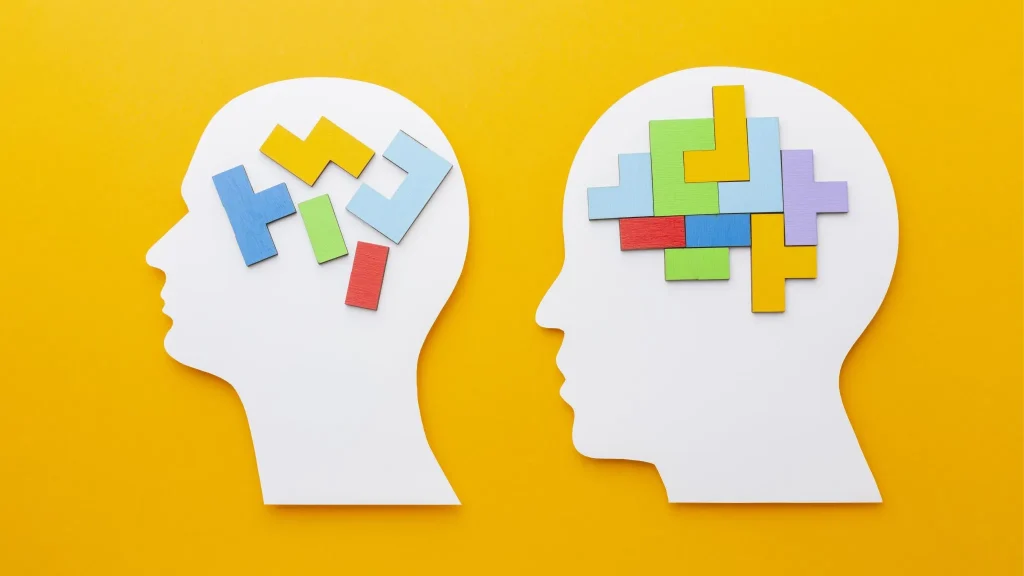
But beware, when kids are unable to solve engaging math riddles, they can get easily distracted. To avoid this, I’d like to share some techniques:
- Even hard math riddles will turn easier if kids read them aloud. This helps to better understand the question and grasp hidden clues.
- Rephrasing also works better if a child cannot understand what’s required in a riddle.
- For visual learners, drawing out the task can be of much help. The hardest math riddles are often abstract; the extra step will make them concrete.
Math riddles for kids with answers help improve concentration
If your kid starts solving a puzzle at a very early age, they won’t have problems with concentration in the future. And if they have a small practice each day? No doubt, you’ll soon see the benefits of math riddles.
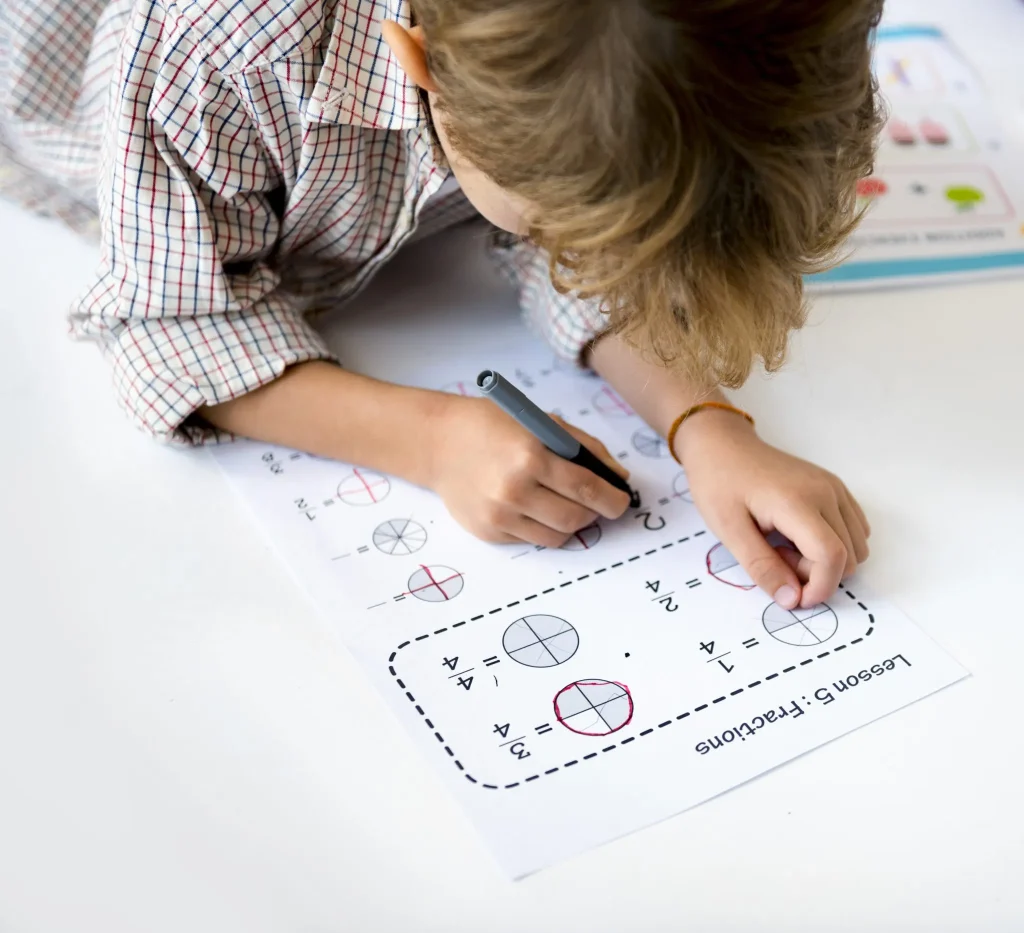
Here’s how math riddles enhance concentration:
- When choosing riddles for kids’ math, pick the most interesting exercise, and you’ll see how they forget about everything that could distract them from learning. Yes, even their phones!
- Secondly, solving challenging math riddles requires children to plan steps and move consistently toward a solution. While creating a detailed roadmap, kids also learn to focus on a task for a long time, not just several minutes.
- Finally, kids’ math riddles train them to hold multiple pieces of information in their minds at once. This strengthens working memory — a key part of concentration.
Math riddles with answers help become more flexible in thinking
Whether you’re dealing with math riddles for elementary students or aiming to tackle math riddles for middle school, the challenge is always the same: approach the problem from different angles till you find the right answer.
These tips will help you succeed:
- Riddles are usually based on polysemantic words. While a child tries to find the best-fitting meaning, they always improve their language skills.
- Similarly, solving math riddles easily involves visualization. Thus, children learn to turn abstract things into concrete, at least in their minds.
- If a child works with challenging math riddles with answers but fails to receive the correct response, they start understanding that a mistake is only a stage of the learning process.
Mathematical riddles — funny ways to improve teamwork skills
When used in a team setting, you can grab other exciting benefits of math riddles for children. Specifically, I’m talking about the ability to interact effectively towards the common goal.
All you need to do is choose a few funny math riddles for kids and encourage your child to solve them together with their peers.
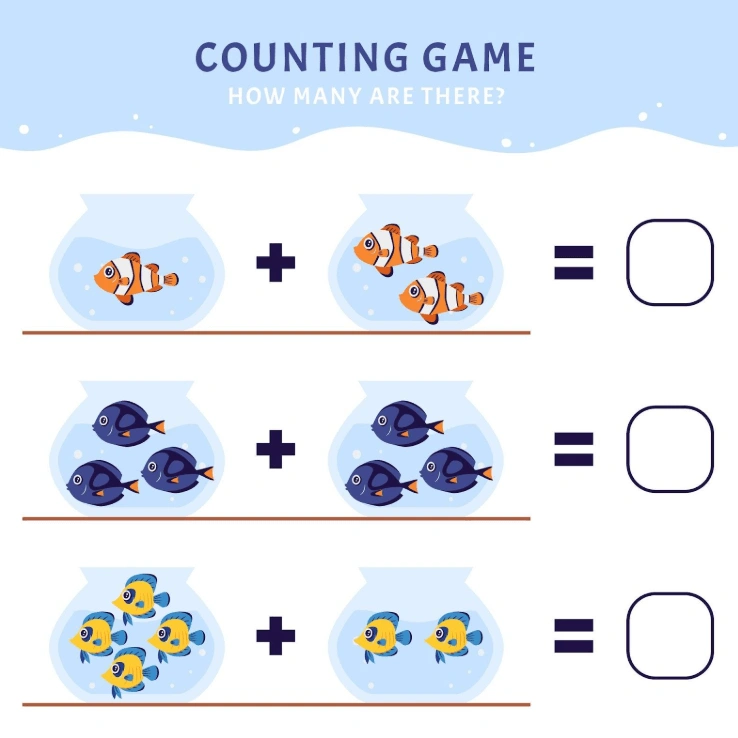
You can also turn the whole thing into a game by dividing kids into two or more teams and setting a timer. Then, count which team manages to solve more of the funny math riddles with answers.
Math riddles for young kid accelerate self-esteem
Last but not least, I’d like to mention that solving elementary or middle school math riddles may help to improve a child’s self-esteem.
Here’s what you should do to create a positive experience for your kid:
- If they face any problems, you should always be there to back them up. Celebrating an effort is just as important as getting right answers with those math riddles for young kid.
- At times, ask them to explain how they managed to solve a specific task. Acting as a teacher helps them feel more valued and important.
- If you find your current math riddles with answer too difficult, skip to simpler tasks. It’s vital to build progress steadily.
Conclusion: Pick engaging math riddles for yourself
Tricky math riddles for kids offer numerous benefits beyond making math classes or homework enjoyable. While solving puzzles and brain teasers, children of all ages develop math reasoning and analytical skills, learn to think outside the box, and improve concentration.
So, if you want to diversify your child’s math routine, you can take some of these 55 math riddles and have fun together.
Alternatively, you can check out the best 70+ Math Quiz Questions from AhaSlides!
Math sometimes comes off as a complex concept, making it hard to teach kids. However, when you use math riddles with answers, you create a fun learning environment.


